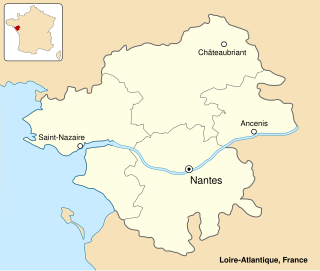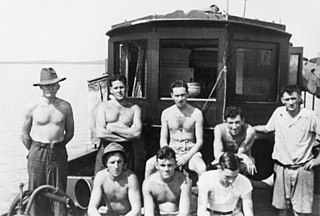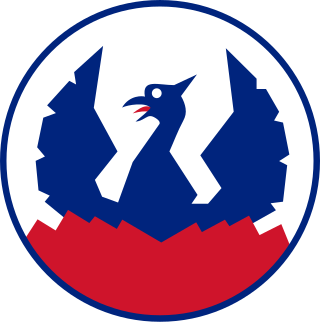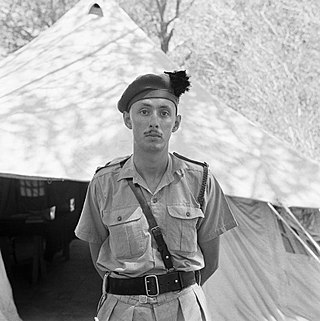Plot
This article needs a plot summary.(November 2013) |
| Heroes II: The Return | |
|---|---|
| Screenplay by | Peter Yeldham |
| Directed by | Donald Crombie |
| Theme music composer | Peter Best |
| Country of origin | Australia United Kingdom |
| Original language | English |
| No. of series | 1 |
| No. of episodes | 2 |
| Production | |
| Executive producer | Graham Benson |
| Producer | Anthony Buckley |
| Running time | 101 minutes (including adverts) |
| Production companies | TVS Films Telso Productions |
| Budget | $6.5 million [1] |
| Original release | |
| Network | ITV (1991) Network 10 (1992) |
| Release | 15 December – 16 December 1991 (UK) 27 April 1992 — 4 May 1992 (Australia) |
| Related | |
Heroes II: the Return is a 1991 British/Australian mini-series about Operation Rimau during World War II. [2] It was a sequel to the 1989 mini-series The Heroes .
This article needs a plot summary.(November 2013) |
After the success of Operation Jaywick, Ivan Lyon of Z Special Force proposes a second raid on Singapore harbour named Operation Rimau again aimed at sinking enemy shipping. Lyon enlists Donald Davidson and Bob Page and nineteen Z Force commandos but finds little faith in Colonel Mott, who backed Jaywick vigorously while other senior officers didn't. When Lyon's original plan is scuppered it looks like it's the end for Rimau, but Lyon receives the unlikely support of Lord Mountbatten who wants to show the dominant American's that Commonwealth forces are still fighting the Japanese too. With Mountbatten overriding Mott, Lyon's force proceed by submarine until they capture a native fishing boat then make a base on Merapas Island. After capturing a vessel and leaving four men to guard their supplies, Lyon sets sail for Singapore disguised as Malay fishermen. While everything is seemingly going well their cover is blown merely miles from their target, Lyon evacuates the fishing boat and sends his force back in canoes. While the majority of crew paddle back towards their rendezvous, Lyon along with five Z Special commandos raid Singapore Harbour in their canoes. Days later when a submarine returns to Merapas to pick up the Z Force men they find the island deserted with little sign of where they've gone.
The war has ended and Army Intelligence officer Captain Ellis is approached to investigate the disappearance of the twenty three Z Special commandos sent on Operation Rimau. Ellis conducts his investigation, questioning captured Japanese officers and men. Piece by piece Ellis learns that Lyon's men were tracked down on Merapas and fled to nearby islands in a bid to hide out until the submarine returned for them. Secret documents from Mountbatten's headquarters reveal to Ellis that a radio distress message sent by Lyon was received by General MacArthur's headquarters but ignored for weeks. Ultimately whilst many were killed, including Lyon and Davidson, ten were captured and taken to Changi Prison to await trial for perfidy. Ellis uncovers Japaneses documents detailing the trial and subsequent executions which in turn leads him to the prisoners Japanese translator, Hiroyuki Furuta. Under pressure from Ellis, Feruta finally admits that the ten prisoners weren't given a fair trial and far from being executed in an honorific manner as documented they were herded into a field and viciously beheaded. Ellis takes his evidence to his superior officers but is told those guilty of war crimes will not be prosecuted under the orders of General MacArthur. So with nothing more left for him to do, Ellis informs the relatives of the Rimau commandos of their fate.
Channel Ten were not interested in making a sequel to The Heroes but Channel Seven were. Robert McKie's book had been the source for the first mini-series but only the rights to the section of it which dealt with Operation Jaywick had been bought. Peter Yeldham did a great deal of original research, helped by Lee Robinson who had previously made a film on the same story, The Highest Honor (1982).
Several of the original cast elected not to return, including Paul Rhys and Jason Donovan, but Christopher Morley, John Bach and Wayne Scott Kermond did. Filming commenced 27 April 1991 and took place in Queensland and at Otford, south of Sydney. Buckley says the UK partners, who had been supportive on The Heroes, were far more interfering on the sequel. [3]
The sequel was popular though it did not rate as well as The Heroes. [3]

The St Nazaire Raid or Operation Chariot was a British amphibious attack on the heavily defended Normandie dry dock at St Nazaire in German-occupied France during the Second World War. The operation was undertaken by the Royal Navy (RN) and British Commandos under the auspices of Combined Operations Headquarters on 28 March 1942. St Nazaire was targeted because the loss of its dry dock would force any large German warship in need of repairs, such as Tirpitz, sister ship of Bismarck, to return to home waters by running the gauntlet of the Home Fleet of the Royal Navy and other British forces, via the English Channel or the North Sea.

Combined Operations Headquarters was a department of the British War Office set up during Second World War to harass the Germans on the European continent by means of raids carried out by use of combined naval and army forces.

Operation Jaywick was a special operation undertaken in World War II. In September 1943, 14 commandos and sailors from the Allied Z Special Unit raided Japanese shipping in Singapore Harbour, sinking six ships.

Z Special Unit was a joint Allied special forces unit formed during the Second World War to operate behind Japanese lines in South East Asia. Predominantly Australian, Z Special Unit was a specialist reconnaissance and sabotage unit that included British, Dutch, New Zealand, Timorese and Indonesian members, predominantly operating on Borneo and the islands of the former Dutch East Indies.

Force 136 was a far eastern branch of the British World War II intelligence organisation, the Special Operations Executive (SOE). Originally set up in 1941 as the India Mission with the cover name of GSI(k), it absorbed what was left of SOE's Oriental Mission in April 1942. The man in overall charge for the duration of its existence was Colin Mackenzie.

Operation Rimau was an attack on Japanese shipping in Singapore Harbour, carried out by an Allied commando unit Z Special Unit, during World War II using Australian built Hoehn military MKIII folboats. It was a follow-up to the successful Operation Jaywick which had taken place in September 1943, and was again led by Lieutenant Colonel Ivan Lyon of the Gordon Highlanders, an infantry regiment of the British Army.

Lieutenant Colonel Ivan Lyon, was a British soldier and military intelligence agent during the Second World War. As a member of Z Special Unit Lyon took part in a number of commando operations against the Japanese and was killed during Operation Rimau while attempting to infiltrate Singapore harbour and destroy Japanese shipping there in 1944.

The MV Krait is a wooden-hulled vessel famous for its use during World War II by the Z Special Unit of Australia during the raid against Japanese ships anchored in Singapore Harbour. The raid was known as Operation Jaywick.
The "Double Tenth incident" or "Double Tenth massacre" occurred on 10 October 1943, during the Second World War Japanese occupation of Singapore. The Kenpeitai—Japanese military police—arrested and tortured fifty-seven civilians and civilian internees on suspicion of their involvement in a raid on Singapore Harbour that had been carried out by Anglo-Australian commandos from Operation Jaywick. Three Japanese ships were sunk and three were damaged, but none of those arrested and tortured had participated in the raid, nor had any knowledge of it. Fifteen of them died in Singapore's Changi Prison.

Operation Tiderace was the codename of the British plan to retake Singapore following the Japanese surrender in 1945. The liberation force was led by Lord Louis Mountbatten, Supreme Allied Commander of South East Asia Command. Tiderace was initiated in coordination with Operation Zipper, which involved the liberation of Malaya.
A long-range penetration patrol, group, or force is a special operations unit capable of operating long distances behind enemy lines far away from direct contact with friendly forces as opposed to a Long Range Reconnaissance Patrol, a small group primarily engaged in scouting missions.

The Motorised Submersible Canoe (MSC), nicknamed Sleeping Beauty, was built by the British Special Operations Executive (SOE) during World War II as an underwater vehicle for a single frogman to perform clandestine reconnaissance or attacks against enemy vessels.

Operation Flipper was a British commando raid during the Second World War, mainly by men from No. 11 (Scottish) Commando. The operation included an attack on the headquarters of Erwin Rommel, the commander of Panzergruppe Afrika in North Africa. It was timed for the night of 17/18 November 1941, just before the start of Operation Crusader. The operation failed as Rommel had left the target house weeks earlier and all but two of the commandos who landed were killed or captured. One member of the Special Boat Section team, who had secured the beach for the commando party, also escaped.

The Z Experimental Station (ZES) was established in July 1942 at Munro Terrace, Mooroobool, Cairns, Queensland, Australia, jointly by Secret Intelligence Australia and the Inter-Allied Services Department. The building chosen to be the headquarters was known as "Fairview", and it had been the home of Richard Ash Kingsford, the first mayor of Cairns and grandfather of aviator Sir Charles Kingsford Smith.

Submarine X-1 is a 1968 British war film loosely based on the Operation Source attack on the German battleship Tirpitz in 1943. In the film, James Caan stars as Lt. Commander Richard Bolton, a Canadian, who must lead a group of midget submarines in an attack on a German battleship.
The Highest Honour is a 1982 Australian/Japanese co-production about Operation Jaywick and Operation Rimau by Z Special Unit during World War II.
The Heroes is a 1989 British/Australian mini-series on Operation Jaywick, a World War II special forces raid on Japanese shipping in Singapore harbour by the Australian Z Special Unit, based on Ronald McKie's 1960 book The Heroes.
Operation Scorpion was a proposed operation in World War II by Australia's Z Special Unit.
Operation Hornbill was a proposed commando operation by Australian forces during World War II.
Operation Lagarto was an Australian military operation in Timor during World War II in 1943. It was run by the Services Reconnaissance Department. The Naval component of the mission was named Operation Mosquito. The operation was ambushed and captured. Japanese intelligence used information from the mission to lure other Australian commandos to Timor where they were captured and killed, notably Operation Cobra (Timor), Operation Sunlag and Operation Suncob.